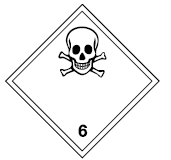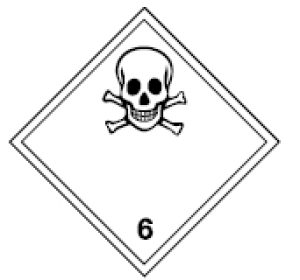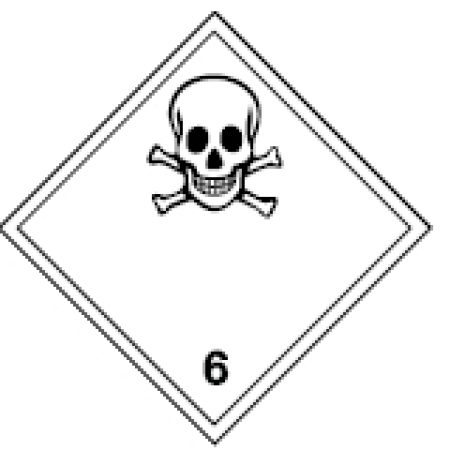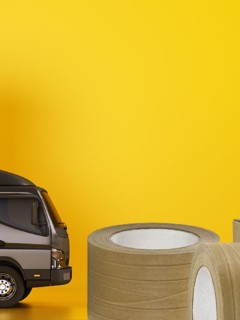We wait for it every year: for the big summer heat, for the six-week-at-a-time outdoor pool weather, for the shoes-off-and-barefoot feeling. But when the temperatures climb permanently above 30 degrees nationwide, the high temperatures can also lead to problems. For example, high heat is bad for asphalt and, together with too little precipitation, carries a high risk of forest fires. We thought about some really hot issues and asked ourselves: How does which material actually behave in the heat? For example, when does paper start to burn, when does a polypropylene storage box melt, when does wood catch fire?
Ignition temperature
The decisive factor is the ignition temperature, also known as the auto-ignition temperature . This is the temperature at which the material simply ignites by itself in the air, i.e. without any further ignition source such as an ignition spark. At wikipedia we learn: This cannot be said in general terms! The more volume the material has, the faster it can ignite. And then, of course, we have known for a long time that not all paper is the same. For example, an ignition temperature of 360 degrees Celsius is given for writing paper. Newspaper, on the other hand, is more dangerous (in the literal sense of the word!) – it catches fire at 175 degrees Celsius.
When does plastic melt?
The ignition temperature of plastics is given as 200-300 degrees Celsius. Much earlier, however, the plastic begins to deform, it melts. Of course, there are also considerable differences here, depending on the composition. A polypropylene bottle (PP) should not be stored at over 90 degrees Celsius, a polyethylene terephthalate bottle (PET) can withstand temperatures of up to 1020 degrees Celsius before it begins to crystallise (it turns white). The melting point is reached considerably later, at around 270 degrees Celsius.
A process in packaging in which the temperature and melting point of plastics play an essential role: Welding. Only when the welding device has reached the appropriate welding temperature for the type of film and film thickness is it possible to produce a satisfactory weld seam. Therefore, a simple but extremely effective tip for welding: Devices with a so-called permanently heated welding system (as opposed to impulse heating) need a few minutes to bring themselves up to operating temperature.
Not all plastics are the same
The bond between the molecules makes the difference:
In the group of thermosets, for example, the macromolecules are very tightly meshed and cross-linked with each other in the form of a lattice. Thermosets are hard and brittle, they do not or hardly melt and deform when exposed to heat, but they can break quite easily. Thermosets are used in the household, for example in the handles of a cooking pot or the housing of a socket. The plastic decomposes when exposed to excessive heat.
The molecules of thermoplastics combine to form long chains. Thermoplastics are used, for example, in drinks bottles. They become soft and malleable within a certain temperature range. When the material cools down, it hardens in its then current form.
Finally,elastomers are elastic under “normal temperature”. The molecules are only connected to each other with a few bonds. In common usage, this is also referred to as rubber. Elastomers are used, for example, for seals or also balloons. Elastomers cannot melt either, but decompose when exposed to too much heat.
Source: wikipedia.org/wiki/Duroplaste
So where is the melting point of plastic?
That depends on the type of plastic. This table gives a clue:
| melts at / melting point | is used for | special properties | |
| Polyethylene – LDPE | from 105 degrees Celsius | Packaging films, bags | tough, high elongation at break LD = low density |
| Polyethylene – HDPE | from 125 degrees Celsius | Packaging films, bags, tubes | high stiffness, high chemical resistance DH – high densitiy |
| Polypropylene (PP) | 165 degrees Celsius | Coffee cups, catering products | very high stiffness |
| Polystyrene (PS) | about 90 degrees Celsius | Filling and cushioning flakes | UV-sensitive, electrostatically chargeable |
| Polyamide | from 200 degrees Celsius | Clothing, textiles | Good abrasion resistance |
| Polyvinyl chloride (PVC) | approx. 210 degrees Celsius | Floor coverings, insulation, medicine | hardly absorbs water resistant to many chemicals |
These letter postage specifications have been valid for Deutsche Post since January 2022.
UV-protective packaging
The knowledge about the different “plastic types” or about the special properties of the different materials can of course also be used when it comes to protecting products from harmful solar radiation through their packaging. After all, anyone who wants to pack, store or ship products that are UV-sensitive is not necessarily happy about a lot of light. For all those who need special protection against UV radiation, for example to prevent plastic articles from yellowing unsightly or rubber products from becoming brittle, UV-resistant pressure seal bags are the ideal solution.
UV-resistant pressure seal bags
The black bags made of LDPE (low-density polyethylene) have been specially developed for packaging and grouping UV-sensitive products – such as various rubber products or high-quality jewellery. They have a density of 60 µ and have three labelling fields. This means that it is always easy to see from the outside what is hidden behind the opaque plastic. The material is anti-UV treated and offers protection against the aggressive rays for a period of about six months. If the bags are in a cardboard box, the protective effect lasts almost indefinitely.
Can metal burn?
In fact, there is such a thing as a metal fire. These fires are extremely difficult to extinguish because extremely high temperatures occur which mean that the addition of water only “fuels” the whole thing. This is because at temperatures of more than 2000 degrees Celsius, water decomposes into hydrogen and oxygen – there is a danger of oxyhydrogen explosions. Burning metal must therefore be smothered, with special extinguishing powder or even sand. Particularly flammable: metal shavings or wool, for example steel wool. This can be really dangerous – but it also looks really good!
The cutting torch also takes advantage of the combustibility of metal. With it, even thick materials can be “cut” almost effortlessly, like butter. Under appropriate heat (ignition temperature of the metal) and with the addition of oxygen, the metal to be cut is liquefied and the slag is blown out: A clean cut edge is produced.
Adhesive tape: exclude damage caused by heat
You see: It really does take supernatural temperatures to cause damage to the majority of our products. But it’s different with everything that sticks. Packing tapes, adhesive tapes, tapes, self-adhesive labels or adhesive strips on cardboard boxes: These products are quite sensitive to heat, even at temperatures that are easy to reach in summer. We recommend that you store your packaging tapes for a maximum of 6 months at a temperature between 18 degrees Celsius and 25 degrees Celsius. If the tapes are exposed to higher temperatures for a longer period of time, the adhesive will start to melt and “leak” sideways. The adhesive layer becomes thinner and the adhesion decreases. Unfortunately, this process is irreversible and the tape becomes unusable. However, if the temperature has been undercut, there is hope: To reactivate the adhesive and make it capable of bonding, store your packaging tapes at room temperature for 24 hours before use.
However, the tape can withstand increased temperatures for a short time: The PP packaging tape RAJATAPE in industrial quality, for example, is heat-resistant up to approx. +65 °C for a short time and cold-resistant (after processing at room temperature) to approx. -17 °C.
What can you do to ensure that your heat-sensitive products reach their destination without damage? We explain in our blog post about thermo boxes 🙂
And what about extreme cold?
So much for the different materials and their properties when exposed to heat. But what about the cold? Minus 27 degrees in the Allgäu, snow in Rome, frozen train switches in Bavaria and the Elbe closed to shipping traffic: How does which material actually behave at sub-zero temperatures?
Everyone has probably experienced that a glass bottle filled with liquid can become a dangerous projectile at temperatures below freezing point (forgetting water on the balcony, leaving champagne in the freezer for too long…)! Plastic, on the other hand, can expand slightly – and thus usually withstands the cold.
Plastic and cold
Polypropylene (PP) has greater rigidity, hardness and strength than polyethylene (PE) and a glass transition temperature of +/- 0 to -10 degrees Celsius. It can therefore become brittle when exposed to constant cold. However, if PP is processed with mineral substances such as talc, chalk or glass fibres, the range of mechanical properties (stiffness, service temperatures, etc.) is significantly extended. Our PP open fronted storage bins, for example, can withstand -30 degrees Celsius!
But polyethylene (PE) should also be specially processed if it is intended for permanent outdoor use: Adding a soot particle content of about 2 % makes the material cold-resistant.
How does corrugated board behave in cold conditions?
A corrugated cardboard box also has an ideal comfort temperature, and this is not at all dissimilar to that of humans: at +20 degrees Celsius and a humidity of 40-60%, the box is at its best, it then has a material moisture of around 7%. If the carton gets colder, however, this also means that the material moisture drops, and in extreme cases this can actually lead to the starch glue becoming brittle. However, this only applies if the material is permanently exposed to high sub-zero temperatures – transport in a lorry, even if it should take a little longer, is not a problem. If you still want to do your cardboard some good: If the temperature rises quickly and violently within a very short time (people who wear glasses know what we are talking about…) condensation may develop – and this could soften the box. However: Who has +30 degrees Celsius and more in the warehouse?
How much cold can an adhesive tape take?
Adhesive tapes can withstand cold transport without any problems. However, the following applies here: To maintain the usual good material properties, the tape must first be brought to room temperature after transport – and off it goes…. ahem…it goes!
As a general rule, transport at sub-zero temperatures is – thank goodness – always temporary and therefore cannot harm the packaging materials.
P.S.: Cold hands? We also have cups for hot drinks!


















